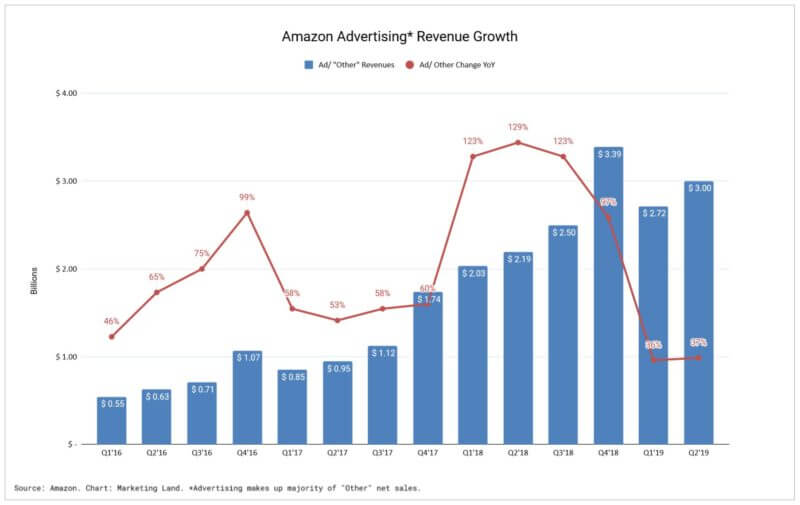Five industry veterans share their insights on what agency leaders need to know about this moment, and how to lead towards positive change.
Performance marketing is a simple concept. Investment in strategies that deliver performance results: more clicks, more leads, more sales, more revenue. Choosing the right performance marketing strategies, however, has become more difficult in recent years. Now there is an abundance of marketing channels to invest in, myriad technologies to choose from, and a wealth of changes happening in the digital landscape to keep pace with.
To succeed in performance marketing today, it’s essential to first invest in the right strategies then work diligently to optimize your efforts. There’s no time and no extra budget for trial and error. In this article, we present 10 of the top performance marketing strategies for 2020 and beyond, all based on the latest trends and opportunities.
Today, there are nearly 50 times more technology providers in the marketing ecosystem than there were a mere eight years ago. Even small businesses must utilize a number of tools to manage their marketing across various channels. Larger businesses are faced with building a complete MarTech stack, which must include an array of tools that help them automate and analyze performance.
Just how much return you get out of your investment in marketing technology really depends on the value of each tool and how well it integrates with your other software. Since new technologies and features are constantly being released, marketers should regularly reevaluate their MarTech stack to ensure they’re always using the most valuable solutions for their needs.
Here are some important questions to ask when evaluating your MarTech arsenal:
Google, Bing, Facebook, and Amazon offer a significant amount of valuable consumer data that marketers can utilize to better target their audiences. These platforms - referred to as “walled gardens” - are dangerous options, though, because they completely own and control the data on offer.
Gartner recommends that marketers avoid data dependence on walled gardens so you can get the most valuable customer insights for your business. To begin, ensure you have a way to store and manage your own first-party audience data. Then you can invest in third-party data from private marketplaces (PMPs). PMP data can be expensive, but it’s higher quality and you can analyze it however you want. Gaining insights from third-party data can be just the advantage your business needs to stay ahead of the competition when everyone is making use of data from the same walled gardens.
Amazon’s advertising revenue skyrocketed in 2018 and continued to bring impressive revenue in 2019:

While performance has now leveled out, Amazon advertising is still expected to grow in importance in 2020 and beyond. This is because Amazon is diversifying its advertising options beyond simply on-site display ads. Forward-thinking advertisers should invest in Amazon demand-side platform (DSP) sooner rather than later. Amazon DSP is a special advertising alternative that allows you to programmatically reach your audiences across the web. Options include Amazon-owned sites (e.g. IMDb), third-party exchanges, and other leading publishers through Amazon Publisher Services.
Amazon executives have frequently expressed their intent to invest more in expanding the platform’s advertising options. DSP already offers exclusive audience access to help marketers reach their ideal customers on Amazon and off. Investing in DSP before it becomes mainstream will give performance marketers critical advantages in a competitive market.
Advertising platforms are constantly bringing out new ad types and features to better suit the goals of marketers. Performance strategies should always allocate some budget for testing out these options. As an example, Google recently released lead form ad extensions for search ads, allowing advertisers to capture contact information right from search results:

Facebook also has a variety of new ad types that can help you reach audiences in a unique, relevant way, such as Messenger Ads, Canvas Ads, and Collection Ads. Regularly experimenting with new ad types ensures you’re always using the most effective options that resonate with your audience and drive marketing goals.
Major advertising platforms like Google and Facebook offer dynamic options that automate ad development. Most marketers assume they can create a more relevant advertising message than AI-powered machines could, but testing out dynamic ad options can also provide inspiration for manually created ads.
Dynamic ad creative also has the advantage of combining the right ad elements based on the interests of individual audience members. Dynamic Search Ads (DSAs), for example, include user search queries in ad headlines to make them more relevant to searchers. Regardless of how well targeted your ad copy is, adapting it to each member of your audience has significant advantages, driving more clicks and conversions.
Whenever Google makes changes to its advertising platform, the goal is to benefit their advertisers. The more effective your ads are, the more revenue potential there is from Google. Rather than resisting these changes, then, it’s usually good practice to embrace them. A notable example is when Google Adwords rebranded to Google Ads to deemphasize the role of keywords and encourage advertisers to make use of audience targeting options. Audience targeting is now an essential strategy of any optimized PPC campaign.
Last year Google made some more changes by adding new ad position metrics, including:
Here’s what top and absolute top look like on a search results page:

The goal was to help advertisers understand and appreciate the role of ad position in overall performance. To this day, though, few have added these metrics to their analytics dashboards or considered targeting impression share over other metrics.
Bidding to target the first page of search results is essential if you want your ads to get any visibility and clicks at all. But bidding to target positions above organic search results or the top spot on the page can bring many more clicks and conversions than other targeting strategies ever could. Google added these new impression metrics for a reason, and performance marketers would be smart to utilize them.
Facebook may be the biggest social channel, but it’s far from the only option. In 2020, performance marketing strategies should include testing out other social platforms, such as LinkedIn, Twitter, or Snapchat. While these alternative social media platforms may not give you as much reach as Facebook, they can certainly help you reach more niche audiences.
The landscape of social media is one that is constantly changing. Facebook has recently seen a huge drop in users, especially amongst younger demographics. Twitter’s user base, meanwhile, continues to grow. This Statista graph shows the number of active Twitter users worldwide over the last decade:

If marketers don’t start diversifying, they’ll never fully understand the opportunities there are to reach audiences on different social platforms.
Omni-channel marketing is an essential aspect of all performance marketing strategies today. Building brand awareness and converting leads means targeting them effectively on different platforms across the web. And the only way you can truly learn from your marketing performance is by attributing conversions to various touchpoints across the web.
Businesses today have many options for marketing attribution. But few develop sophisticated attribution models that reflect the true complexity of the customer journey. Today’s performance marketers need to invest in data management and attribution technology that can analyze data from all relevant marketing channels. It’s also essential to create custom attribution models that reflect the real value of your marketing collateral.
Whether you rely on Google, Facebook, or another third-party tool, you should always test out and compare different attribution models to see how performance pans out. As performance marketing has become the norm, it’s now impossible to rely on one-dimensional models such as first or last-click attribution.
Most enterprise businesses consider building an internal marketing team versus outsourcing as two dichotomous options. You either invest the time and money to train your employees in various marketing tasks or you rely on skilled agency personnel to handle it. But what many don’t realize is that combining strategies can be the most efficient and cost-effective for your business.
According to Gartner’s latest spending survey, CMOs are spending less and less on agency services despite investing more in MarTech:

Many marketing software companies also offer agency services to streamline onboarding and help you get the most value out of their tools. Rather than investing in training your team to use the software, it makes sense to outsource to agencies that are experts in driving ROI. This also frees up your internal marketing team to focus on other marketing tasks, such as growth and development.
Google’s Automated Bidding has been around for a while now, yet performance marketers shouldn’t take Google’s word for it with automation. It’s better to experiment with different automated strategies as well as custom targeting and bid adjustments to see which performs best for your unique needs.
Performance marketers need an automated bidding strategy that targets the right combination of value-based metrics for their unique goals. And if Google’s options don’t fit your needs, then third-party tools can. QuanticMind is an automated bidding technology that allows advertisers to target Revenue-Per-Click. This sophisticated bidding strategy considers an array of value-based metrics beyond what Google Ads automation has to offer.
When investing in automated bidding in 2020 and beyond, be sure to evaluate all the targeting options available.
These 10 strategies are just a few of the many paths you can take with performance marketing. The key to success is investing in strategies that offer the most potential for business growth. Whatever options you choose, ensure you monitor performance comprehensively. Accurate analytics insights ensure you always make informed changes to your campaigns, maximizing the value of each marketing channel for your business.